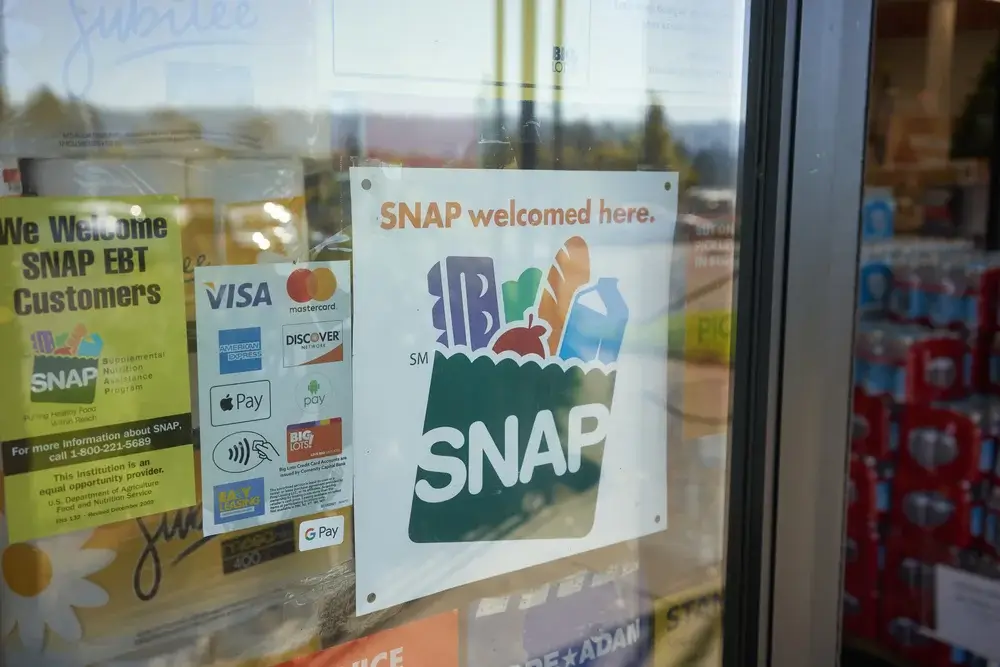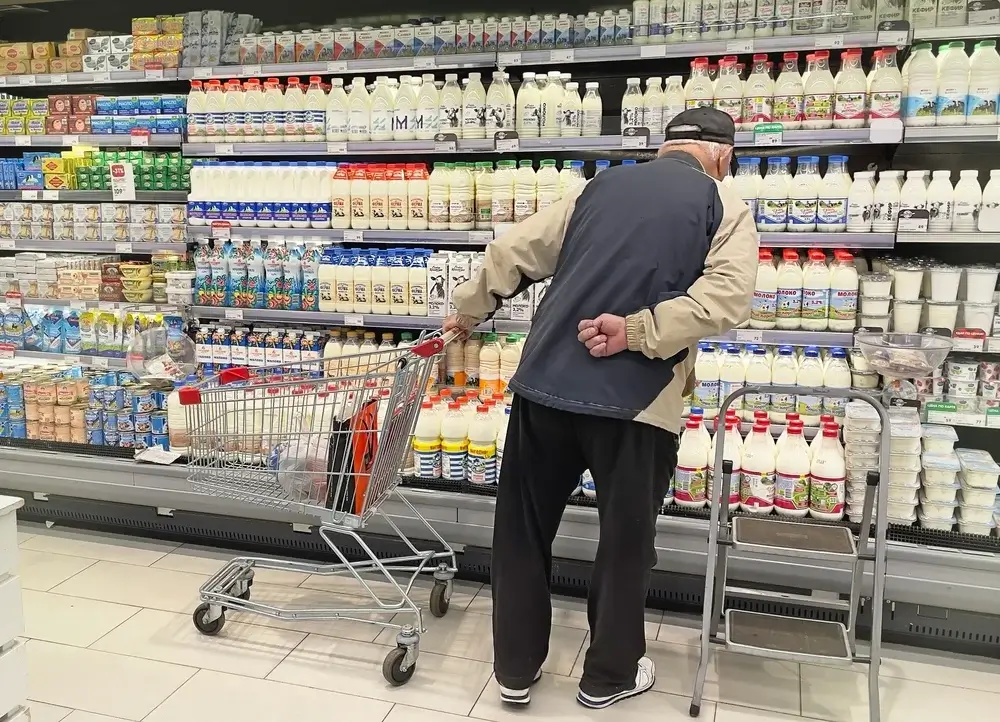The Never-ending SNAP Debate Risks Stalling Another Farm Bill
SNAP has been a point of contention between politicians for decades since the program’s inception. With less than a month to pass a new Farm Bill, can this debate be put to rest in time?
The Never-ending SNAP Debate Risks Stalling Another Farm Bill
SNAP has been a point of contention between politicians for decades since the program’s inception. With less than a month to pass a new Farm Bill, can this debate be put to rest in time?

Photography via Shutterstock.
Across the country, Americans are feeling the effects of inflation and rising costs of food, a pressing issue that’s been at the forefront of this year’s presidential election. As both candidates promise to lower grocery prices, it’s clear that food affordability is top of mind for consumers, two-thirds of whom say they feel the effects of inflation most when shopping for food.
While food prices continue to soar, so does food insecurity, making the Supplemental Nutrition Assistance Program (SNAP) as important as ever, says Salaam Bhatti, the SNAP director at the Food Research & Action Center.
SNAP—formerly known as food stamps—provides more than 42 million Americans, including 17 million children, with food benefits to purchase groceries. “SNAP is the nation’s most powerful tool in the fight against hunger, and it’s also a lifeline for millions of families,” says Bhatti.
Despite receiving strong support from the public, SNAP has been a point of contention between Democrats and Republicans since its inception, often leading to legislation-stalling debates between the House and Senate.
This year is no different. With less than a month to pass a new Farm Bill (that was supposed to pass this time last year), the never-ending SNAP debate risks delaying the country’s most important piece of food and farming legislation yet again.
LEARN MORE
Find out what a Trump or Harris presidency could mean for farmers and consumers.
The idea for food stamps originated during the Great Depression, when farmers were producing more food than the country needed and still millions of people went hungry. This eventually resulted in a food stamp system where people could use blue and orange tickets to “buy” farmers’ crop surpluses.
Although the program ended in1943, it was revived by President John F. Kennedy in 1964 through The Food Stamp Act, which became the basis for SNAP, according toChristopher Bosso, the author of Why SNAP Works: A Political History—and Defense—of the Food Stamp Program.
From the get-go, the program was controversial. According to the United States Department of Agriculture (USDA), by 1976, a record-high 18 million people were using food stamps, but concern over the cost of the program prompted Republicans to push for stricter income and work requirements for food stamp recipients, as well as restricted eligibility for students and immigrants. Democrats opposed these changes—an age-old dilemma that still divides politicians to this day.
“Many conservatives—most of them Republican these days—see SNAP as ‘welfare’ and want it limited to only the ‘truly needy,’ with a range of rules designed to force those who seek assistance to prove they are deserving of help,” says Bosso.
Work requirements are a consistent point of disagreement between Democrats and Republicans. The House Farm Bill proposal seeks to implement further work requirements to be eligible for SNAP, such as making high school students who earn an income ineligible. It would also exclude people who are in subsidized employment (jobs where the employer receives government funding to pay employees) from qualifying if their income is high enough, according to the Center on Budget and Policy Priorities.
“I think this really outdated, really dangerous, morality narrative is wrong and ignores the fact that poverty is a systemic issue. It’s not a moral one,” says Leah Eden, executive director of Equity Advocates, a non-profit dedicated to fighting the root causes of food insecurity through policy.
READ MORE
Find out how SNAP work requirements imact food security.
SNAP is also the Farm Bill’s most expensive program, which naturally makes it controversial in a trillion-dollar legislation. From 2019 to 2023, SNAP spending doubled to $127 billion from $63 billion as unemployment rates dropped to an all-time low and more people experienced food insecurity.
According to a study by the Urban Institute, the extra SNAP spending kept approximately 4.2 million Americans out of poverty in the first three months of 2021, but the increase in spending faced harsh criticism from Republicans who argued that the program takes up too much funding.
In May of this year, the House Agriculture Committee released a Farm Bill draft proposing a $30-billion cut to SNAP over 10 years by preventing the USDA from updating the cost of the Thrifty Food Plan (TFP), which determines the amount of SNAP benefits per person outside the cost of inflation. This would be the largest cut to the program in over 30 years.
In 2023, the TFP was adjusted for the first time to reflect the cost of a nutritious, healthy diet in today’s economy. “It was updated to consider the nutritional guidance of today, the food and beverages that are available on the market today and consumer shopping habits of today, as opposed to what was the original comparison of the 1960s,” says Bhatti. (Think fresh fruits and vegetables, instead of potatoes and dried beans.)
After the TFP update in 2023, the average SNAP benefit went to $6.20 from $4.80 per person per day. “Democrats are working to protect that,” says Bhatti of the TFP.
That $30-billion cut proposed in the House Bill would be in part be used to fund an increase in commodity crop (soy, corn, peanuts) pricing, spurring debate in Washington over whether to send money to consumers or producers.

SNAP doesn’t just benefit low-income Americans, it also stimulates economic growth in times of recession, says Eden.
Every new dollar spent on SNAP benefits $1.54 in economic growth, according to a USDA study. In a recession, previous studies have estimated this effect to be as high as $1.80. So, when inflation and unemployment rates are high, SNAP is an economic stimulator.
“Folks are spending these dollars at their local farmers markets and grocery stores, so it’s then benefiting those local farmers and food retailers across the country,” says Eden.
While there’s no evidence that this directly results in lower food prices, money spent at local grocery stores leads to more jobs, higher wages, local economic activity and more resilient communities, she says.
With neither the House or the Senate willing to budge on SNAP cuts, it’s highly unlikely that a new Farm Bill will pass by the Sept. 30 deadline. Some fear there may not even be a draft passed by the end of the year.
But fortunately for the millions of Americans who rely on SNAP, the program will operate as usual even if the Farm Bill expires and a new draft is delayed, which Bhatti says is all the more reason not to compromise on cuts.
“No farm bill is better than a bad farm bill.”
Follow us
This work is licensed under a Creative Commons Attribution-NoDerivatives 4.0 International License.
Want to republish a Modern Farmer story?
We are happy for Modern Farmer stories to be shared, and encourage you to republish our articles for your audience. When doing so, we ask that you follow these guidelines:
Please credit us and our writers
For the author byline, please use “Author Name, Modern Farmer.” At the top of our stories, if on the web, please include this text and link: “This story was originally published by Modern Farmer.”
Please make sure to include a link back to either our home page or the article URL.
At the bottom of the story, please include the following text:
“Modern Farmer is a nonprofit initiative dedicated to raising awareness and catalyzing action at the intersection of food, agriculture, and society. Read more at <link>Modern Farmer</link>.”
Use our widget
We’d like to be able to track our stories, so we ask that if you republish our content, you do so using our widget (located on the left hand side of the article). The HTML code has a built-in tracker that tells us the data and domain where the story was published, as well as view counts.
Check the image requirements
It’s your responsibility to confirm you're licensed to republish images in our articles. Some images, such as those from commercial providers, don't allow their images to be republished without permission or payment. Copyright terms are generally listed in the image caption and attribution. You are welcome to omit our images or substitute with your own. Charts and interactive graphics follow the same rules.
Don’t change too much. Or, ask us first.
Articles must be republished in their entirety. It’s okay to change references to time (“today” to “yesterday”) or location (“Iowa City, IA” to “here”). But please keep everything else the same.
If you feel strongly that a more material edit needs to be made, get in touch with us at [email protected]. We’re happy to discuss it with the original author, but we must have prior approval for changes before publication.
Special cases
Extracts. You may run the first few lines or paragraphs of the article and then say: “Read the full article at Modern Farmer” with a link back to the original article.
Quotes. You may quote authors provided you include a link back to the article URL.
Translations. These require writer approval. To inquire about translation of a Modern Farmer article, contact us at [email protected]
Signed consent / copyright release forms. These are not required, provided you are following these guidelines.
Print. Articles can be republished in print under these same rules, with the exception that you do not need to include the links.
Tag us
When sharing the story on social media, please tag us using the following: - Twitter (@ModFarm) - Facebook (@ModernFarmerMedia) - Instagram (@modfarm)
Use our content respectfully
Modern Farmer is a nonprofit and as such we share our content for free and in good faith in order to reach new audiences. Respectfully,
No selling ads against our stories. It’s okay to put our stories on pages with ads.
Don’t republish our material wholesale, or automatically; you need to select stories to be republished individually.
You have no rights to sell, license, syndicate, or otherwise represent yourself as the authorized owner of our material to any third parties. This means that you cannot actively publish or submit our work for syndication to third party platforms or apps like Apple News or Google News. We understand that publishers cannot fully control when certain third parties automatically summarize or crawl content from publishers’ own sites.
Keep in touch
We want to hear from you if you love Modern Farmer content, have a collaboration idea, or anything else to share. As a nonprofit outlet, we work in service of our community and are always open to comments, feedback, and ideas. Contact us at [email protected].by Marin Scotten, Modern Farmer
September 25, 2024
Modern Farmer Weekly
Solutions Hub
Innovations, ideas and inspiration. Actionable solutions for a resilient food system.
ExploreExplore other topics
Share With Us
We want to hear from Modern Farmer readers who have thoughtful commentary, actionable solutions, or helpful ideas to share.
SubmitNecessary cookies are absolutely essential for the website to function properly. This category only includes cookies that ensures basic functionalities and security features of the website. These cookies do not store any personal information.
Any cookies that may not be particularly necessary for the website to function and are used specifically to collect user personal data via analytics, ads, other embedded contents are termed as non-necessary cookies.
SNAP is critical to the health of children and mothers, the readiness of Americans. Farmers benefit from it. Government has got to cooperate and has a renewed Farm Bill with vigorous nutrition subsidy and climate considerations.